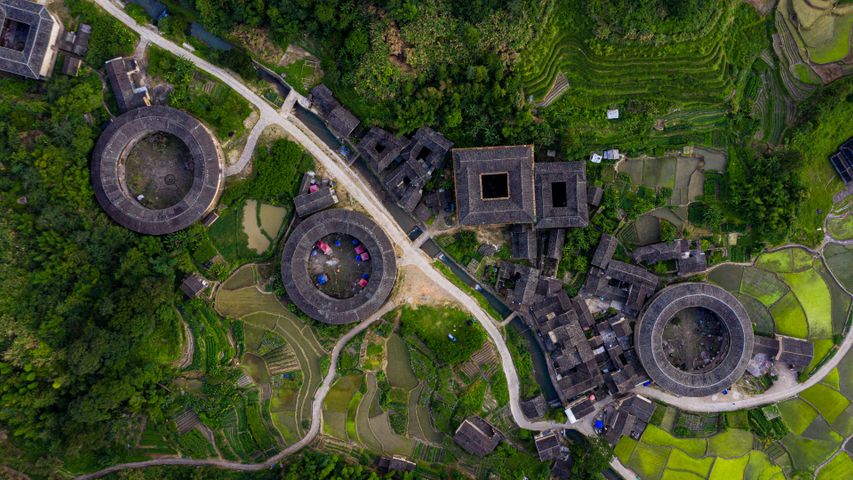Lake Tekapo with Aoraki/Mount Cook National Park in the background on New Zealand's South Island
© Sophie Dover/Getty Image
Blue Zealand. Lake Tekapo, New Zealand
The striking electric-blue waters of Lake Tekapo are caused by extremely finely ground rock particles suspended in the melted waters of glaciers in the nearby Southern Alps. Snowmelt from the range feeds two similarly stunning lakes in the Mackenzie Basin of New Zealand’s South Island, Lake Pukaki and Lake Ohau, which share their neighbour’s remarkable turquoise colour and mountainous backdrops. New Zealand’s highest peak, Aoraki/Mount Cook, reigns in Aoraki/Mount Cook National Park, seen in the background of this image.
The name Tekapo is a misspelling of the Māori word Takapō, which means ‘to leave in haste at night.’ But if you are one of the region’s many visitors, you may find the nighttime even more mesmerising than the day. Lake Tekapo is a certified Dark Sky Reserve, one of the world’s largest. With night skies almost completely free of light pollution, stargazing doesn’t get much more vibrant, and tours cater to manuhiri (visitors) interested in astro-tourism. If that’s not reason enough to stay the night, the area’s abundant skiing and fishing opportunities might be. There’s certainly no need to leave in a rush.
Related Images
Bing Today Images


 Vila Franca Islet, São Miguel Island, Azores, Portugal
Vila Franca Islet, São Miguel Island, Azores, Portugal
 Mona Vale Rockpool, Sydney, Australia
Mona Vale Rockpool, Sydney, Australia
 Tea garden at Yangjiatang Village, Songyang County, China
Tea garden at Yangjiatang Village, Songyang County, China
 Aerial view of Khao Sok National Park, Surat Thani, Thailand
Aerial view of Khao Sok National Park, Surat Thani, Thailand
 Great Blue Hole, Belize
Great Blue Hole, Belize
 Dam, lake and mountains in Kerala
Dam, lake and mountains in Kerala
 Peggy's Cove Lighthouse, Nova Scotia, Canada
Peggy's Cove Lighthouse, Nova Scotia, Canada
 Fujian Tulou complex of historical and cultural heritage buildings in Fujian province, China
Fujian Tulou complex of historical and cultural heritage buildings in Fujian province, China




